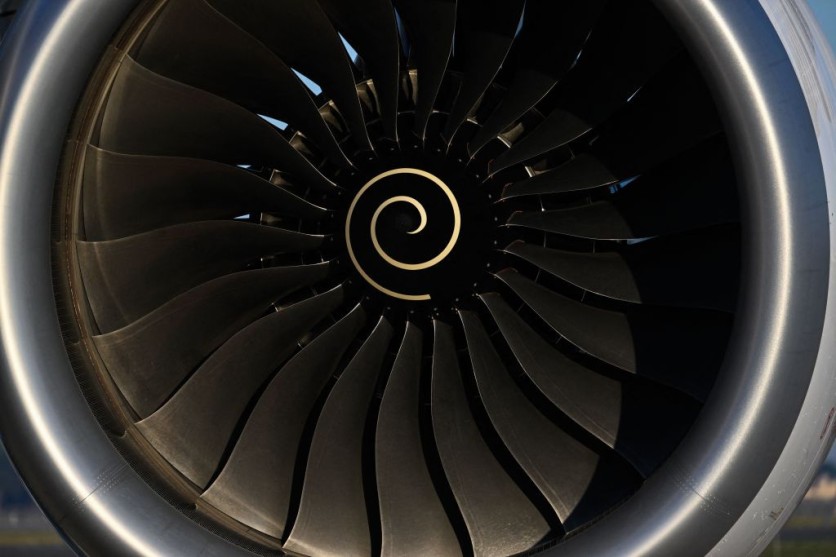A mathematics professor is poised to illuminate the mysteries surrounding the physics of ice buildup on aircraft surfaces.
With aviation safety at the forefront, this innovative exploration aims to uncover the intricate mechanisms behind ice formation and its impact on aircraft performance.

A Rolls-Royce Trent XWB turbofan powering an Airbus A350-900 is pictured on January 31, 2023, at Rome's Fiumicino airport. (Photo by Andreas SOLARO / AFP) (Photo by ANDREAS SOLARO/AFP via Getty Images)
Enhancing Aircraft Safety, Sustainability
Researchers at the Waterloo Institute for Sustainable Aeronautics (WISA) are harnessing mathematical principles to create aircraft models that prioritize safety, aerodynamics, fuel efficiency, and environmental sustainability.
Tackling one of aviation's longstanding challenges, the team, led by David Del Rey Fernández from the University of Waterloo's Department of Applied Mathematics, is dedicated to developing cutting-edge simulation software algorithms to optimize aircraft design.
Interesting Engineering reported that the research team is dedicated to tackling the issue of ice buildup on aircraft wings and fuselage, which arises when specific atmospheric conditions conducive to ice formation are encountered during flight. This aspect has become a pivotal focus of their endeavors.
Ice accumulation during flight poses a substantial risk to aircraft performance, potentially leading to severe consequences. Fernández's laboratory is committed to developing sophisticated algorithms and software tools aimed at gaining a comprehensive understanding of these processes.
Their goal is to utilize this knowledge to refine future aircraft designs, thus mitigating the potential negative outcomes of ice formation. He highlights the severity of the problem and the critical impact of ice buildup on aircraft performance.
Fernández emphasizes that this interference can impede takeoff, heighten the risk of stalling, disrupt crucial sensors, and ultimately compromise aircraft safety.
Advancing Ice Buildup Prediction in Aircraft Design
The team is working hard to solve the ice buildup problem for Bombardier Inc., a major Canadian business jet maker. They aim to understand how ice forms on airplanes and find ways to reduce its impact.
They're creating advanced computer programs that simulate ice buildup in three dimensions to do this.
In the past, aviation engineers relied on simple math to create the first drafts of aircraft designs. These drafts were tested on small models in wind tunnels and then adjusted before being finalized.
However, this old-fashioned method is slow, expensive, and requires a lot of effort.
Nowadays, engineers use sophisticated computer programs to quickly and affordably create many different design options.
These digital designs are then turned into physical models for testing, making the design process much faster and smoother.
Also read : Japan Launches $33 Billion Project for Next-Gen Hydrogen Passenger Jet to Lead Aircraft Manufacturing
Del Rey Fernández provides further insight, emphasizing the need to expand beyond existing two-dimensional ice buildup prediction methods.
They aim to develop software capable of accurately simulating ice formation in three dimensions, aligning with the complex nature of aircraft design and operation.
Del Rey Fernández and Nataj have partnered with Ansys, a prominent firm renowned for its advanced simulation software in product design, testing, and operation.
Their collaboration aims to augment the software's capacity to model complex interactions, including airflow dynamics and the interactions of aircraft wings during flight.
Related Article : Massive Boeing 787 Dreamliner Lands Smoothly on Icy Antarctica Runway, Sets Record Near Norwegian Research Station

![Apple Watch Series 10 [GPS 42mm]](https://d.techtimes.com/en/full/453899/apple-watch-series-10-gps-42mm.jpg?w=184&h=103&f=9fb3c2ea2db928c663d1d2eadbcb3e52)



